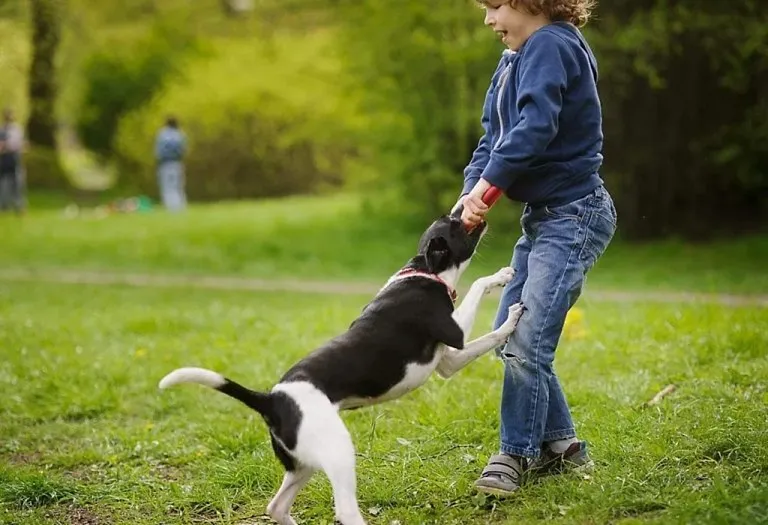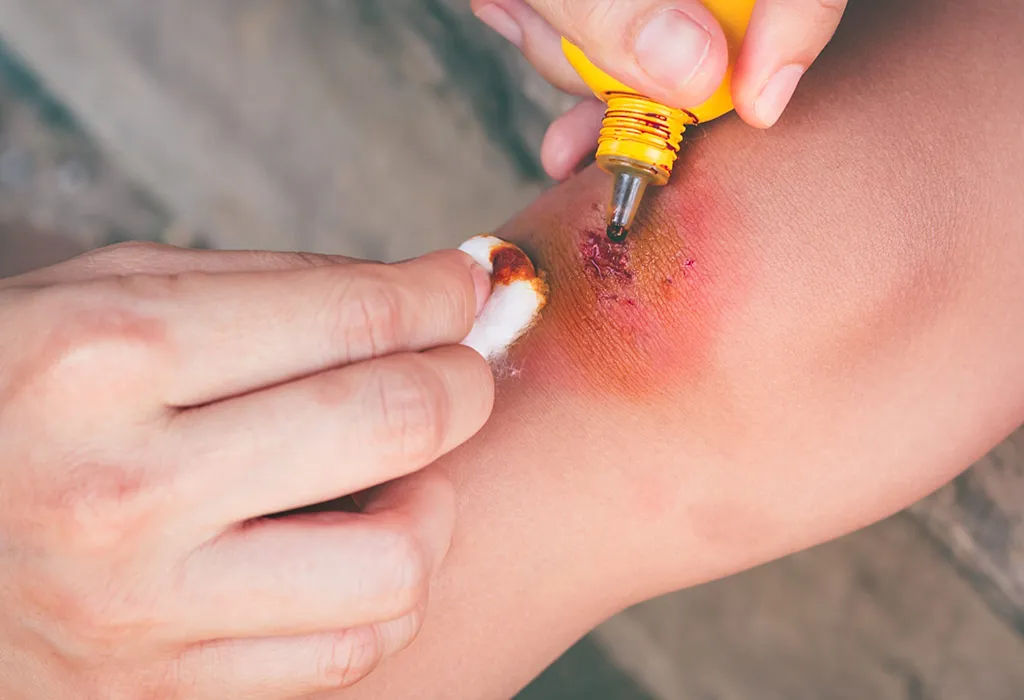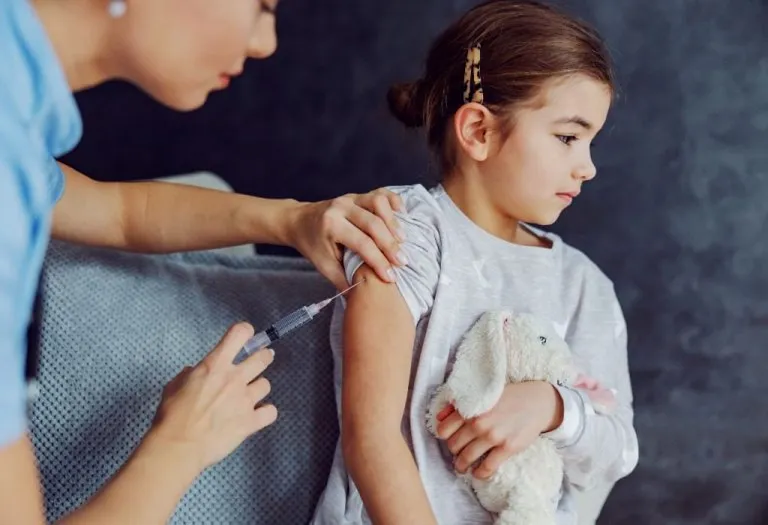What to Do if Dog Bites Your Child – A Parents Guide

Dogs are considered man’s best friend, and it is natural to assume that your best friend will not harm you! But it is important to remember that dogs, too, can feel threatened or become over-excited and knowingly or unknowingly lash out at you or your child in the one way they know best – biting. It is also a fact that children are more vulnerable to dog bites than adults. Knowing why do dogs attack children is crucial in preventing and managing such incidents. By being prepared and informed, you can effectively manage dog bites in children and take necessary actions to prevent future incidents. Read on to learn how to handle this challenging situation and safeguard your child.
Why Do Dogs Bite Children?
You cannot predict when or why a dog bites on kids. There are some reasons why a dog might bite. They are pack animals, and these instincts determine most of their behaviour. Many dog bite incidents involve children under the age of five and dogs who are familiar with them. The following are some reasons why this happens:
- Some dogs can appear big compared to very young children. This can give them a feeling of superiority that can then manifest in the form of protectiveness of an object, territory, or person.
- Young children, particularly those under five, may not fully understand the concept of personal space when playing with a family or neighbour’s dog. Their playful actions, such as pulling the dog’s tail or fur, can be misinterpreted and provoke the dog to bite (1).
- When children suddenly get too close to a dog and startle it, the animal might react by attacking (6).
- A sick or injured dog might bite.
- When a dog perceives a running child as prey, it can lead to biting.
How Dog Bites Are Common In Kids?
Dog bites are quite common in children, with statistics showing that a significant number of bite incidents involve young individuals. According to the Centers for Disease Control and Prevention (CDC), nearly 4.5 million dog bites occur each year, and children are among the most frequent victims. Specifically, children aged 5 to 9 are at the highest risk. It is estimated that around half of all children will experience a dog bite by the time they reach their teenage years. These incidents often result in injuries requiring medical attention, highlighting the importance of educating children and parents about safe interactions with dogs and effective prevention strategies.
Types of Damage Caused By a Dog Attack
Besides the physical pain that your child is likely to endure as a result of being bitten by a dog, there is also bound to be a certain amount of emotional trauma to deal with as well.
1. Physical
Dog bites can be categorised as minor or severe. While minor ones only require a visit to the doctor and basic first aid, severe injuries might even require surgery. This is because severe injuries usually occur on the head, neck, and face, where the nerves and bones might easily be affected. Reconstructive operations may be required to repair this type of physical damage.
2. Emotional
The mental trauma that your child experiences as a result of a dog bite is likely to last a lifetime. This might change your child’s perception of dogs and pets forever. Getting your child evaluated for emotional trauma and seeking counselling can help them get through this.
First Aid for Dog Bites in Kids
If there are no visible marks on the skin, such as tearing or punctures, it is not necessary to see a doctor. But, after administering first aid, it is best to seek medical opinion and err on the side of caution. Here is what to do if the family dog bites the child:
- Stem the bleeding using a clean towel to apply pressure to the wound. You can also elevate the injured limb.
- Use soap and water to clean the affected area and hold it under running water for a while (3).
- Dab dry and apply an antibiotic ointment (7).
- Do not apply any dressing, and do not get the wound stitched.
Treatment
After administering first aid, it is best to seek out a medical opinion, irrespective of the bite’s severity, to avoid further complications. The doctor might give your child a tetanus injection, antirabies vaccine and, if needed, antirabies immunoglobulin based on the severity of the bite. The standard schedule for the rabies vaccination is five doses on days 0, 3, 7, 14 and 30. Here, day ‘0’ is the day the vaccination starts. A regimen of five 1 ml doses of IM rabies vaccines should be given to previously unvaccinated persons.
The first dose of this 5-dose course should be administered as soon as possible after the exposure. This date is then considered day 0 of the series of post-exposure prophylaxis. The additional doses should then be administered on days 3, 7, 14, and 28 after the first vaccination. The doctor will also prescribe antibiotics to prevent or control infection. A plastic surgeon will be called in if the injuries need reconstructive surgery, especially when it is the face or neck.
Risks Associated With Rabies
In India, as rabies is widespread in a large population of dogs and cats, starting treatment and keeping the biting dog/cat under ten days of observation is compulsory.
Prevention
Here are some simple tips to help you keep your child safe from dog bites and attacks.
- When choosing a pet dog, go for a breed known for its gentle nature.
- Never leave your child unsupervised around a dog, even if it is the family pet that has been with you for a long time.
- Avoid displays of affection that involve hugging, kissing, or similar actions that can put your face too close to the dog.
- Do not approach a dog feeding her puppies.
- Teach your child to deal with aggressive dogs. If the dog seems unfriendly, tell them to stand still and look down.
- Ensure your children know not to tease dogs by snatching their toys or treats.
- Dogs must not be disturbed when they are eating or sleeping (4).
- Instruct your children to avoid unknown dogs and not to try to pet them.
- Teach your family dog that good things happen when children are nearby.
- Provide your dog with a child-free zone as a space to retreat to, such as a kennel or a partitioned enclosure.
- Encourage gentle behaviour towards dogs in your child.
- If the dog is with its owner, always seek the owner’s permission before approaching the dog (2).
- Tell kids that the dog will play with them only as long as it wants to, and when it walks away, it means he has had enough for the time being.
- Be sure to watch for any new stray animals that wander into your neighbourhood and report them to the appropriate authorities.
When to Take Your Child to Emergency Room for Dog Bite?
When a dog bites your child, it can be challenging to determine whether the injury requires a visit to the emergency room. While some bites may be minor and can be treated at home, others may necessitate immediate medical attention. Here are some key situations where you should consider taking your child to the emergency room for a dog bite:
- Deep or Large Wounds: If the bite has caused deep puncture wounds or large lacerations, it is important to seek medical care to clean and possibly stitch the injury properly.
- Excessive Bleeding: Any bite that results in uncontrollable bleeding requires immediate attention to prevent significant blood loss and to ensure proper wound care.
- Signs of Infection: Redness, swelling, warmth, pus, or increased pain around the bite area are indicators of infection and should be evaluated by a healthcare professional promptly.
- Facial, Head, or Neck Bites: Bites in sensitive areas such as the face, head, or neck are dangerous and should be assessed by a doctor to avoid complications and potential scarring.
- Unknown Vaccination Status of the Dog: If the dog’s rabies vaccination status is unknown or if the dog is exhibiting strange behaviour, it is crucial to visit the emergency room for potential rabies exposure and necessary post-exposure prophylaxis.
FAQs
1. How can I train my family dog to be less aggressive?
Enrol your dog in obedience training and socialisation classes. Ensure your dog gets enough exercise and mental stimulation. Consult a professional dog trainer or a veterinarian behaviourist if your dog shows aggression (5).
2. How can I educate my community about dog bite prevention?
Organise community events or workshops that focus on dog bite prevention and safety. Partner with local veterinarians, animal shelters, and schools to spread awareness. Make sure to distribute educational materials that teach both children and adults how to interact safely with dogs.
3. How to handle a dog bites on children’s faces?
Keep your child calm, gently clean the wound with soap and water, and apply pressure to stop bleeding. Seek immediate medical attention to assess the injury and prevent complications. Follow medical advice closely for wound care and attend follow-up appointments as needed. Provide emotional support to help your child cope with any distress from the incident.
Do not panic if your child is the victim of a dog bite. Administering first aid is the first step. Then, take your child to the nearest hospital or doctor’s office for further evaluation.
This information is just a guide and not a substitute for medical advice from a qualified professional.
References/Resources:
1. How to protect your kids from dog bites; Children’s Hospital of Orange County; https://health.choc.org/how-to-protect-your-kids-from-dog-bites/
2. Preventing Dog Bites; Nemours KidsHealth; https://kidshealth.org/en/parents/dog-bites.html
3. Treatment for Dog and Cat Bites and Scratches; Nationwide Children’s Hospital; https://www.nationwidechildrens.org/conditions/health-library/treatment-for-dog-and-cat-bites-and-scratches
4. What You Can Do About Dog Bites; Nationwide Children’s Hospital; https://www.nationwidechildrens.org/family-resources-education/family-resources-library/what-you-can-do-about-dog-bites
5. Aggression; American Society for the Prevention of Cruelty to Animals; https://www.aspca.org/pet-care/dog-care/common-dog-behavior-issues/aggression
6. Dog bite prevention; American Veterinary Medical Association; https://www.avma.org/resources-tools/pet-owners/dog-bite-prevention
7. Dogs; Centers for Disease Control and Prevention; https://www.cdc.gov/healthy-pets/about/dogs.html
Also Read:
Chigger Bites on Kids
Deworming for Kids
Dealing with Insect Bites in Kids
Was This Article Helpful?
Parenting is a huge responsibility, for you as a caregiver, but also for us as a parenting content platform. We understand that and take our responsibility of creating credible content seriously. FirstCry Parenting articles are written and published only after extensive research using factually sound references to deliver quality content that is accurate, validated by experts, and completely reliable. To understand how we go about creating content that is credible, read our editorial policy here.


























